|
|
For years, traditional WordPress themes have dominated the ecosystem’s website-building market. But with the rise of the block editor, full site editing, and page builders, many WordPressers are asking if these enduring solutions (and their creators) have had their time in the sun.
Before we uncover the crystal ball and get into who (or what) will be fading from the limelight, let’s start with a question that seems trivial when taken at face value. Look deeper, however, and you’ll discover many layers and no real consensus within the community.
In some ways, the question has divided WordPress into two camps…
What Is a WordPress Theme?
In the early days, WordPress themes were design-focused and basic. They were practically just ‘skins’ for WordPress blogs with almost no functionality and very limited customization options for users.
We call these ‘traditional’ WordPress themes today.
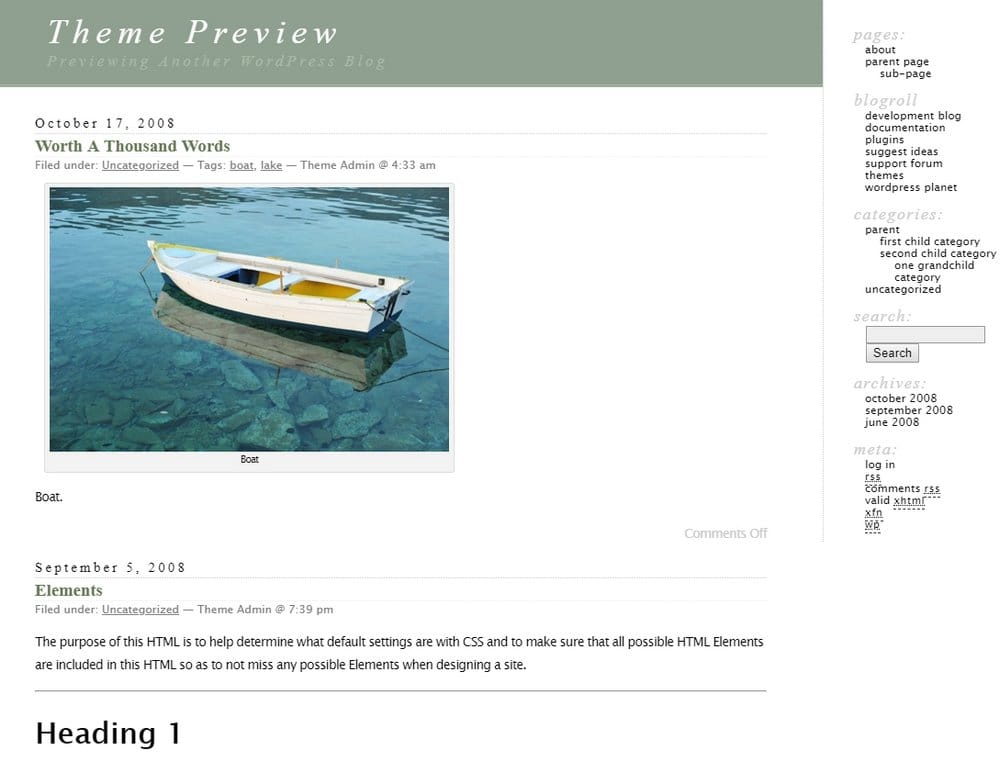
But as the ecosystem evolved and tech advanced, devs and agencies saw an opportunity to create themes that had a lot more going on under the hood. Say hello to ‘solution’ WordPress themes 👋
When they first appeared on the scene, the boundaries weren’t clearly defined. But as solution-rich WordPress themes became commonplace, at some point, the WP.org team drew a line in the sand and set defined borders. According to them, a theme should only deal with the visual aspects. Anything that gets into the behavior or functional territory of a website needs to be in a plugin.
Hear that? That’s the sound of a disconnect.
- On one side of the sand were creators who believed that WordPress themes should only focus on the visuals — any complementary behavioral/functional features must be provided in the form of ‘recommended companion plugins’. In practice, this ‘recommendation’ appears as an admin notice once a theme has been installed.
- On the other side, you had creators who wanted behavior and functionality to be included out of the box. This meant that users wouldn’t have to install anything else once the WordPress theme was installed.
In 2015, the WordPress.org Themes Review Team started to enforce the latter, placing themes firmly in the design domain. This meant that richer, solution-based themes found themselves without an official home, and product makers either had to sell on marketplaces or from their own websites. If they chose to stay on WP.org, however, they’d need to create complementary plugins as a workaround (aka ‘companion plugins’). As an example, check out the top 10 commercial WordPress themes. The majority of them prompt users to download and install plugins to get the full functionality.
WordPress.org’s enforced delineation sparked something of a philosophical debate in the community.
From a technical perspective, it made sense to offer companion plugins because decoupling the visual aspects from the behavioral aspects (theoretically) gave users more freedom to switch WordPress themes without losing functionality. This is the primary technical reason the ‘lean themes camp’ (which the WP.org Themes Review Team is part of) rooted for this practice.
But from a non-technical point of view, when a solution-like theme featured multiple dependencies, the practice was unwieldy and overly complex for the average WordPress user.
But that was then and this is now — a ‘now’ that’s more complicated because of the newer solutions in the WordPress themes space.
Let’s examine.
The WordPress Themes Landscape: Past and Present
Where Do Minimal (aka Traditional) WordPress Themes Stand Today?
Traditional WordPress themes still sit on the ‘default’, design-centric side of the spectrum. As of writing, there are 10,807 free themes in the WP.org directory and the following popular themes give you an idea of the market’s spectrum and where users are gravitating:
- Blocksy (100,000+ active installs)
- Ocean WP (700,000+ active installs)
- Astra (1 million+ active installs)
To this day, the focus of traditional WordPress themes is on the visual design of a website. What’s changed is that developers now have more connection points to plug into and add customization capabilities, behaviors, and visual aspects. These capabilities are implemented via hooks (actions and filters) and it’s pretty much the universal opinion that all WordPress themes should house these features so they can be extended.
Premium Solutions and the Era of Commercial WordPress Themes
‘Solution’ themes, which are typically commercial/premium WordPress themes, give users access to advanced features and customization options. They’re full-blown website solutions with functionality for multiple markets or features tailored to specific verticals, like real estate or dentistry.
WordPress.org does not list the number of commercial themes it offers, but it does motivate their inclusion in the repository:
While our directory is full of fantastic themes, sometimes people want to use something that they know has support behind it, and don’t mind paying for that. The GPL doesn’t say that everything must be zero-cost, just that when you receive the software it must not restrict your freedoms in how you use it.
With that in mind, here are a collection of folks who provide GPL themes with extra paid services available around them. Some of them you may pay to access, some of them are membership sites, some may give you the theme for zero-cost and just charge for support. What they all have in common is the people behind them who support open source, WordPress, and its GPL license.
WP.org’s catalog does not account for the many (many!) other premium commercial WordPress themes being sold on marketplaces and online stores. ThemeForest alone has 15,000+ themes on its marketplace — 50% of them have made at least $1,000 in a month and 5% in the region of $10,000 in the same period.
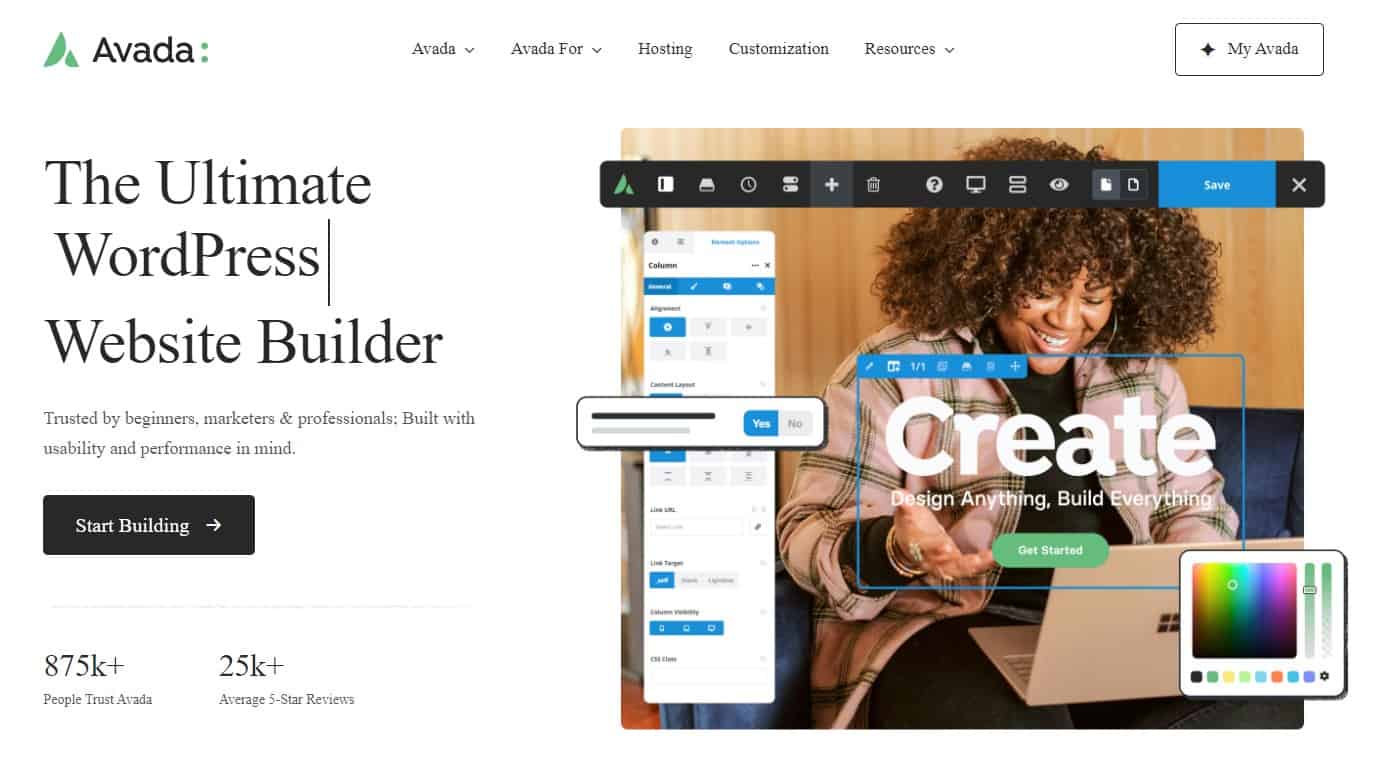
Regardless of where you stand on the ‘Death of WordPress themes’ argument, you have to admit those numbers indicate that the market is still highly lucrative.
Commercial WordPress themes can be broken down into:
Niche Themes
These WordPress themes come with pre-built features, functionalities, and designs that are tailored to the specific needs of an industry or business niche.
For example, a niche WordPress theme for a restaurant would come with features like menu management, reservation management, and online ordering. A theme for a real estate agency would offer property listings, property searches, agent profiles, etc.
Multipurpose Themes
Versatile and flexible, these WordPress themes are used for creating websites for multiple verticals and industries. They’re designed to offer a wide range of features and functionalities that can be customized to fit the needs of different types of businesses, organizations, and individuals. A single multipurpose WordPress theme can be implemented across multiple markets because they often come bundled with several plugins to offer deeper functionality.
Behind every product is a maker, so let’s explore the creators who stand to lose should WordPress themes become obsolete.
Who Are WordPress Theme Developers?
Depending on the area of focus, WordPress theme developers typically have a good understanding of WP architecture, PHP, HTML, CSS, and JavaScript. They’re mostly visually driven and have a knack for design principles, user experience (UX) best practices, and on-trend aesthetics.
Simple enough.
Well, not really. Being ‘visually driven’ usually means the deeper development principles are lacking, and vice versa. Traditional theme developers are mostly responsible for lean, minimal WordPress themes — like those found on WordPress.org — and many don’t have the skills to create a premium commercial theme from scratch, on their own.

For this, you’ll need a plugin/theme developer ‘amalgam’ (which is rare) or a team of developers who can pool their plugin (functional) and theme (visual) skills to create a comprehensive solution that incorporates responsive design, cross-browser compatibility, accessibility, etc.
All-in-one solution theme devs are hard to come by. Users and businesses are more likely to reach out to agencies for bespoke, premium solutions as they have the workforce and budget to accommodate their needs.
To summarize, generally:
- Traditional WordPress themes are the domain of solo developers
- Premium solution themes are the province of teams as well as theme developers who are also skilled at plugin development, although this is rare
Looking for more information on the above? In How To Get Hired as a Remote WordPress Developer in 2023, we explore the roles available to ambitious coders in the WP space, including WordPress theme development.
Now that we’ve introduced the primary players, let’s get into the competition that’s threatening to upend their ascendency.
The Competition Muscling In On the WordPress Themes Landscape
WYSIWYG Editors — The Death Knell of WordPress Themes?
New players have entered the game…
In the last 5 years, there’s been huge progress in the ‘no code’ space, which accelerated even more during COVID. Many of the existing tools have matured conceptually and advanced in areas like speed, UI/UX, ease of use, accessibility, SEO integration, stability, etc. WYSIWYG editors like Squarespace, Webflow, and Wix have evolved into easy-to-use, accessible solutions that have revolutionized the market by putting the power of control and customization in the hands of design-focused web creators and end users looking for simplicity.
The advancements haven’t stopped there.
No longer do you need a developer to code a website from scratch or a designer to create compelling visuals — full site editing and platforms like Gutenberg (the WordPress block editor) have emerged to add impetus to the WYSIWYG (r)evolution.
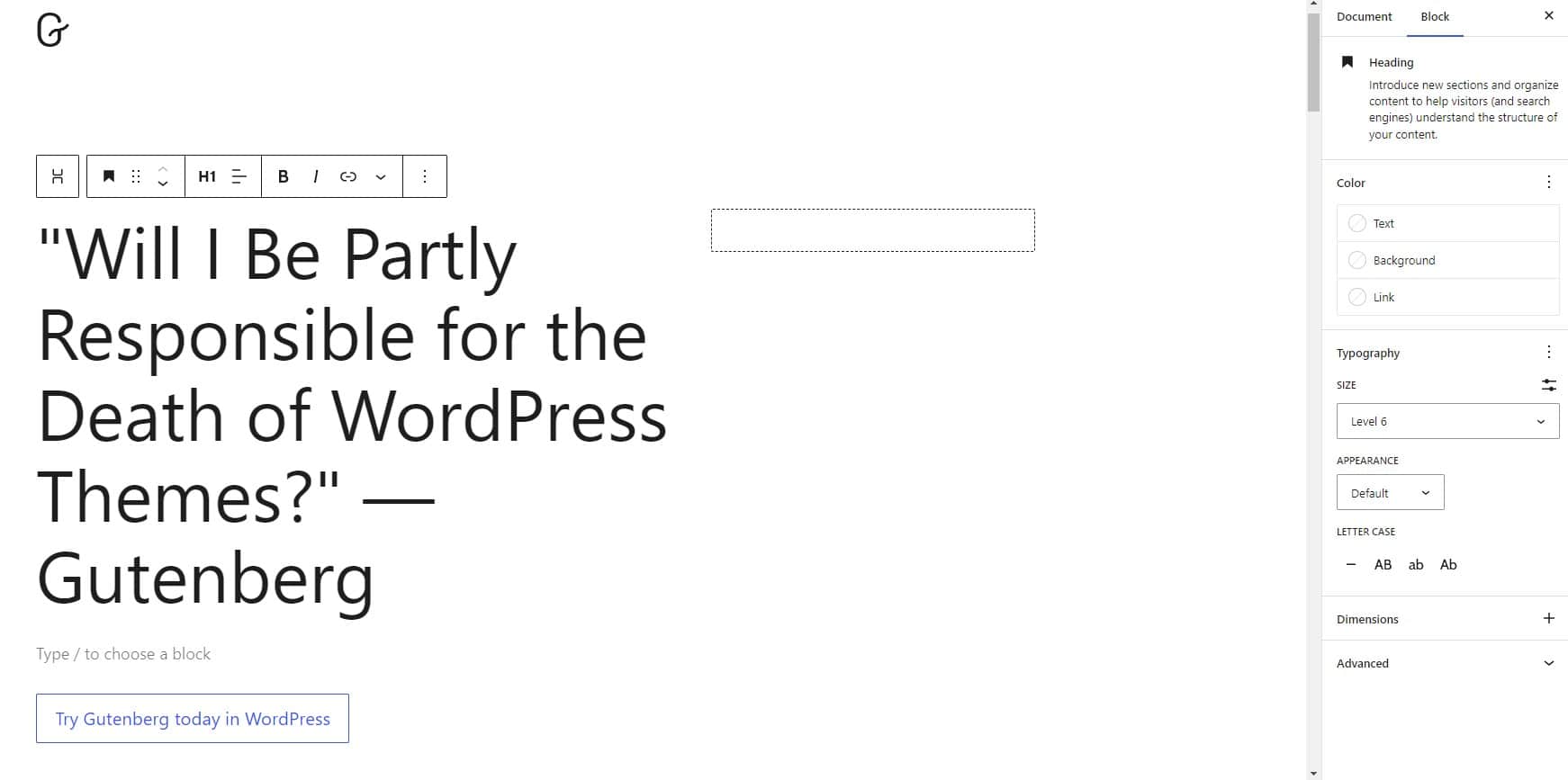
With page builders and similar, users have the freedom to ‘piggyback’ on top of existing infrastructure — themes, templates, etc. — and modify the content on a higher level. It makes for a friendlier, more flexible, and more intuitive experience than before.
But — and this is a critical ‘but’ — WYSIWYG editors and page builders mostly tackle the visual aspects of website building. And for the most part, they’re not concerned with behavior or functionality, meaning that full solution WordPress themes — be they niche or multipurpose — aren’t in danger of going the way of the dinosaurs any time soon.
Danger averted? Unfortunately not…
What Drag-and-Drop Page Builders Mean for Traditional WordPress Themes
The real question is if page builders will smother their historic, visually driven counterparts. Warning: if you’re a traditional WordPress theme developer, you probably won’t like the answer…

Eventually, page builders will force traditional themes from the market to the point that it’s no longer commercially viable for makers to create them. The value proposition and ease of use that WYSIWYG editors offer are just too persuasive for non-tech-savvy users. For proof, one just has to look at Elementor’s Hello. This ‘clean slate’ starter theme has millions of sites using it and is the most popular theme on WordPress.org (excluding the ‘Twenty Twenty’ official themes).
Hope is not lost, however. And from the ashes of tradition, new opportunities will rise…
Most likely, traditional WordPress themes will transition into templates. In some ways, templates and traditional themes aren’t that different — WP.org’s official definition of a theme is pretty close to how we define templates. In other ways, the two are fundamentally different. For example, a template can be stored in a single JSON file, while a theme will typically require many files and many file types, images, etc.
These fundamental differences illustrate the simplicity of templates and play into our predictions.
Templates and Template Kits: When One WordPress Door Closes Another Opens
As mentioned, WordPress theme developers had to know coding fundamentals in the past. Today, however, we’re seeing page builders evolve into visual editing tools that are similar to online design solutions like Figma and Canva. It’s pretty obvious that the visual editor and page builders are being developed with web creators and designers in mind, and not for ‘code savvy’ developers.
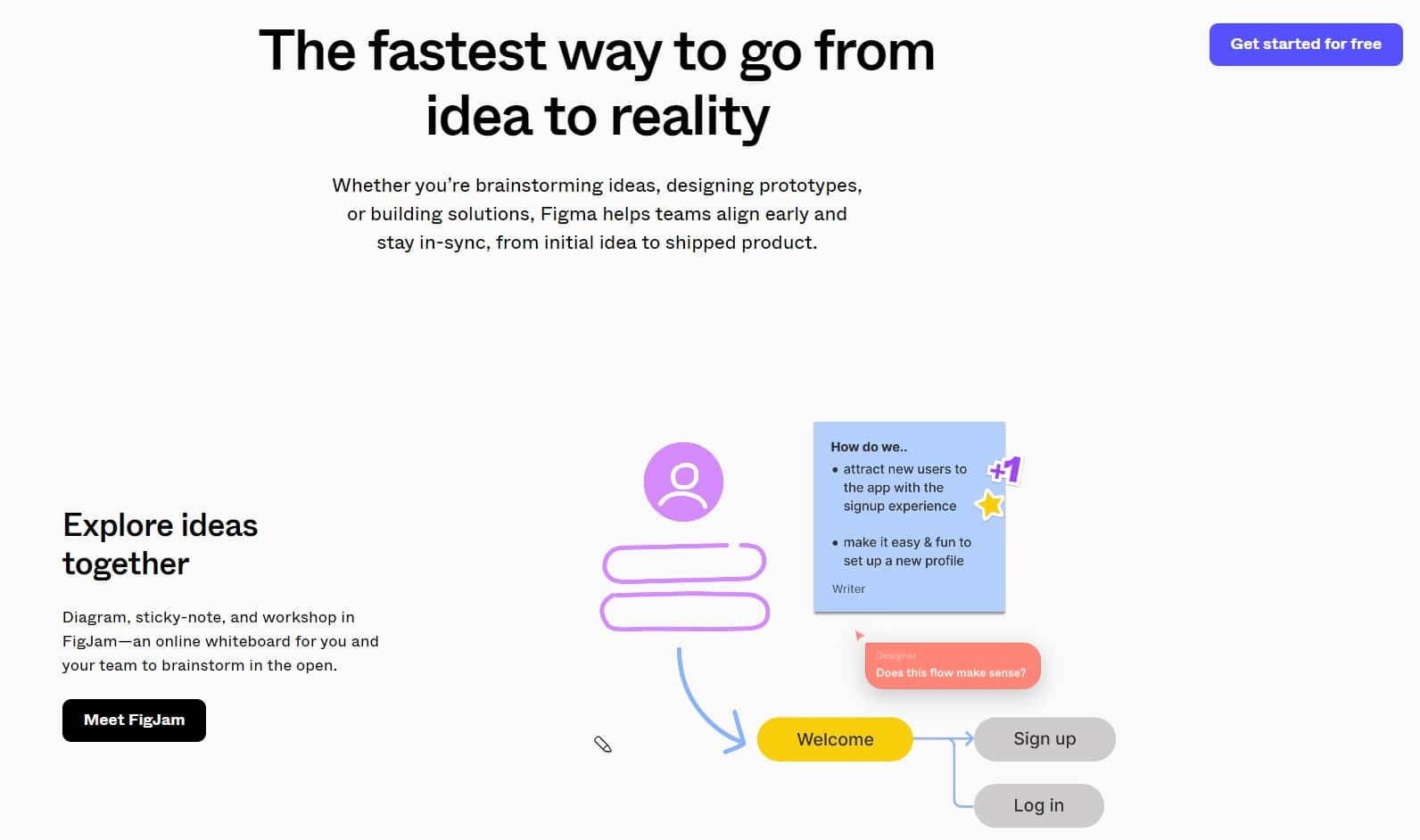
This design-centric drive is empowering web creators with tools to build templates. Templates are essentially WP.org themes minus the high-level, simplistic functionality. A key difference between the two is that templates don’t offer developers hooks — these become the page builder’s responsibility.
For example, let’s say that you want to automatically add a 5-star rating — or any other visual component — under the images on your site. The template itself is a simple JSON file and doesn’t have extension capabilities. In such cases, a developer would need to integrate with the hook of the ‘image widget/block’ of the page builder (assuming there is one). This way, when the template renders, it will also add the rating under images.
I will add that, in most cases, the mindset is different when working with page builders. If something visual needs to be added, it’ll be done by the user via an editing experience and not through an automated injection by plugins. This means the 5-star plugin will offer a widget/block that needs to be dragged and dropped into place instead of the plugin doing it for users automatically.
For the above reasons, templates are a boon for visually-driven professionals because they no longer need developers to create good-looking websites — they can easily create a top-notch, eye-catching template and take advantage of the commercial opportunities available.
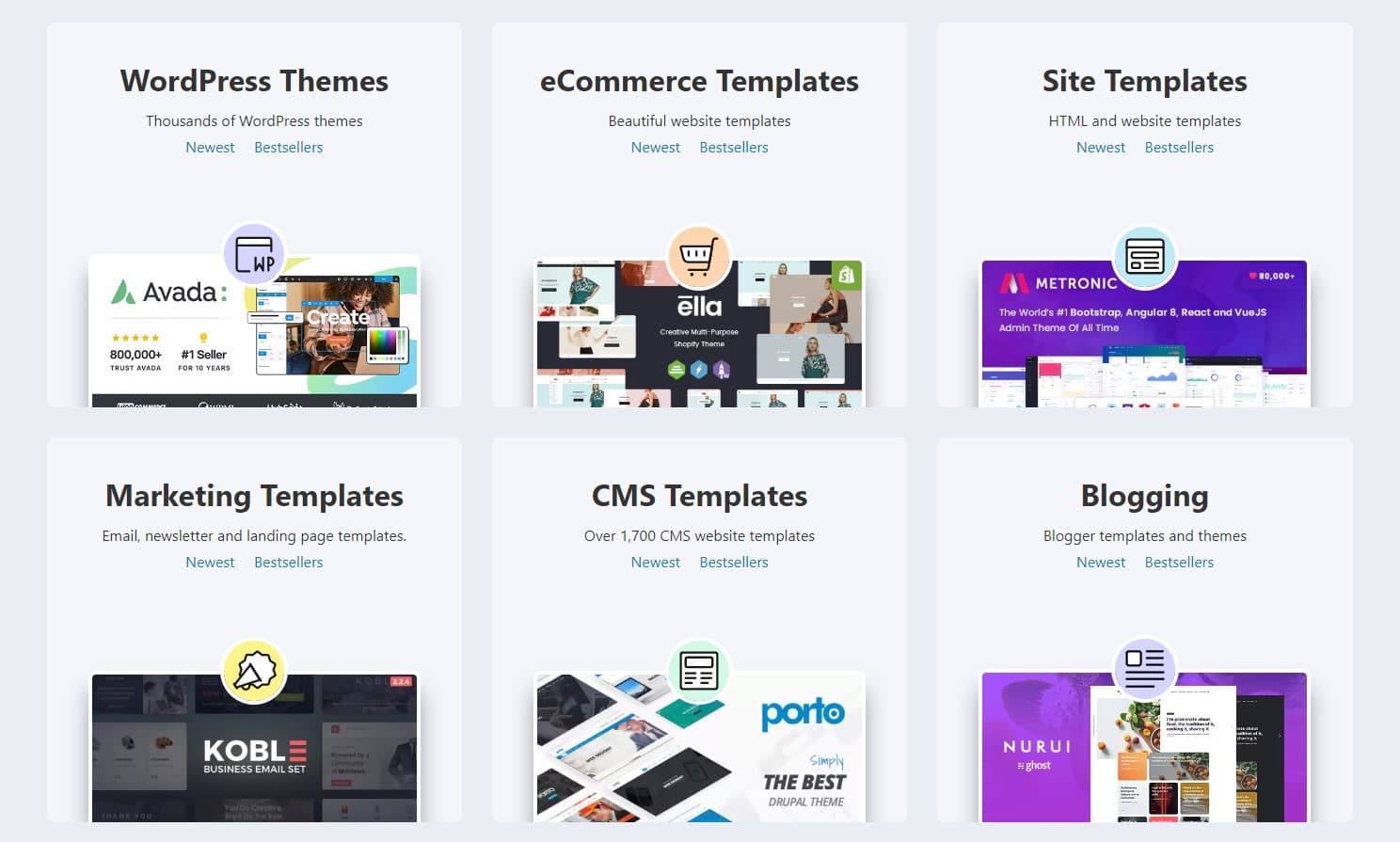
While the transition to templates is great for design democratization, our dentist or realtor will still need a developer to implement the specific website functionality using either a theme or page builder and a few plugins. Because it’s highly unlikely that either of these personas has the technical prowess to implement specific back-end functionality, they’ll have to pick one of three website-building options (which we’ll get into further down 😉).
Will Tech-Savvy Niches and Ecosystems Witness the Death of Traditional Themes?
Let’s use Freemius as an example. We have designers, visual illustrators, and animators on the team, so we don’t necessarily need to build a theme to create a new website. We can create the designs as we need them and use something like Elementor to drag and drop them in place.
This does away with the need for traditional WordPress themes. And tech-savvy markets will probably be the first to completely transition from the WordPress ‘old guard’ in favor of quicker solutions like drag-and-drop page builders or the WordPress block editor, Gutenberg.
And with transition, comes opportunity.
Template Accessibility Will Bring More Designers to the WordPress Table
Themes are already a commodity. Templates and template kits will push this area to extremes because more web creators/designers will enter the space to take advantage of the opportunity before it becomes saturated.
Creating, exporting, and selling templates and template kits is relatively straightforward, so why not throw your design hat into the template ring?
Sure, the market will be flooded with options soon. But this is a good thing for the user community and the ecosystem. Users will be spoilt for choice and healthy competition will drive innovation.
Another reason it benefits users is that templates cannot technically break websites. Themes house a level of technicality which means there’s always the chance a bad interaction on the back end can break something visual on the front end. A further point of interest is that templates require far less customer support than traditional WordPress themes — less support means less admin and more time to push out products.
What I’m getting at here is that lean, design-orientated traditional WordPress themes will become obsolete. This is their future. Everything we’re seeing indicates that the ecosystem is headed in that direction. But every gap needs to be filled, and templates and template kits are the logical heirs to the traditional WordPress theme throne. Developers need to be aware of this and should be ready to take the necessary steps or transitions to safeguard their careers.
But does the same future await premium solution themes?
Is the Digital Reaper Coming for Solution-rich Themes?

If you look at the ecosystem right now, it’s apparent that solution themes aren’t going the way of their leaner siblings.
While page builders like Elementor and Beaver Builder can handle the visual components, they can’t solve the functional aspects of a website without the help of additional plugins. Sure, full site editing and WYSIWYG editors are evolving to be more extendable, but there’s still no shortcut to getting a fully functional website unless you purchase a premium WordPress theme. There will always be a need for an all-in-one solution that does everything upon installation, and page builders are simply not a threat to the powerful visual/functional combo a premium solution offers.
Pretty cut and dry, right? Not so much, if observations over recent years are anything to go by.
Splitting Digital Hairs (aka Separating Commercial Theme Components)
Solutions like Avada come with a ton of bundled plugins. This feature-rich, all-in-one approach gives Avada a competitive edge because the components are interconnected and everything works together in service of a singular goal:
- An out-of-the-box, good-looking, and easy-to-manage website solution. By bundling everything together, it’s easier to create a seamless experience where the functional and visual parts play well together.
However, because the functionality is nested within one package, users will lose a good portion of the features if they switch themes. Why? Because the components have been developed to work together and you’d need to be tech-savvy to separate them and add new ones.
For this reason, Avada and similar have a competitive advantage — it’s a hassle for users to swap themes or seek different functionality.
But over the years, many solutions have opted to split visuals and functionality, so surely there are benefits involved.
Indeed.
One of the critical benefits of spitting the package is that you can retain functionality by keeping the plugins activated. From a modular and extendable perspective, there’s clear value in splitting the functionality and design, and it does lend credibility to WP.org’s stance of keeping themes to the visual aspects and plugins to the functional.
It also offers consumers freedom of choice.
Let’s give our dentist and realtor friends a break and introduce some decidedly more rebellious personas: rockstars.

Our rock band is about to hit the road. First off, they’ll need a website that:
- lists upcoming shows
- showcases tracks and videos
- puts up pics from concerts and official photoshoots
- displays merchandise and has eCommerce functionality that enables purchasing
Or, maybe the budding rockstars are enigmatic characters who don’t feel it’s necessary to include a photo gallery, preferring instead to curate their ‘aesthetic’ on Instagram.
This is the freedom of choice I spoke of. If a company offers a theme/plugin split, the band can pick and choose exactly what functionality works for them, be it an audio player or email configuration.
And if they have an identity crisis or need to shift with the trends, it’ll be easy for them to change up the visual aspects of the website while still retaining functionality.
And splitting components is also good for the creators…
When One Becomes Two (or More)
Over and above the benefits for users, there’s commercial value in separating themes and plugins. Suddenly, a solopreneur or business has two (or more) viable products that can be sold separately.
For example: if a user requires functionality that their current theme lacks, your plugin could potentially fill that gap. By the same token, if they’re happy with the functionality of their website but not with the aesthetic, you could offer them a theme with visuals that better fit their niche or vertical.
What’s more, product makers can bundle these solutions together and charge more than they would if the product was developed and positioned as an all-in-one solution theme. Essentially, product makers can break down their value proposition into two packages.
But where there are benefits, there are also downsides.
This practice can create confusion for end users who aren’t tech-savvy. With typical commercial WordPress themes, it’s a simple ‘click to install’ to get everything you need. Splitting up the theme means that users need to figure out what’s needed, and when you’re a struggling artist trying to hack a website together, this might be an unnecessary hurdle that’ll push them to another solution.
Also, there’s no guarantee that the new visual layout and the existing plugins will play together nicely. The band will simply have to live on a prayer (shameless Bon Jovi punt 😉) and hope for the best. A way to avoid this mismatch of components is to stick with the same company and select a different theme they’ve developed. That way, you’ll be getting a new visual layout that should work with the existing functionality (if the company was studious in its development).
Though separating visual aspects and functionality makes the development technologically complex and hampers FTUE (first-time user experience), the practice does make it easier for users to switch should they wish.
Now that the players, the competition, and their potential outcomes have been explored, let’s finally uncover the crystal ball to delve into…
What the Future Holds for WordPress Themes
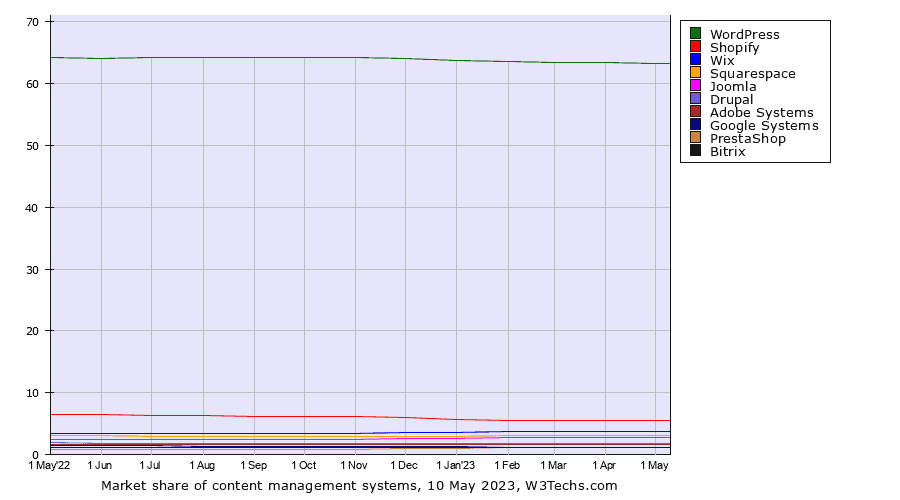
It can’t be argued that WP page builders and Gutenberg will be instrumental in securing WordPress’s stake in the web creation arena. Full site editing and Gutenberg were, after all, developed in response to WordPress-adjacent solutions like Squarespace and Wix. They are a means to stimulate long-term growth and draw bigger audiences — creators and users both — to the WordPress ecosystem.
These new solutions are essentially doing two things:
- One: they’re making WordPress more accessible to less tech-savvy people like designers and web creators. With page builders and templates, creators can maintain and edit the site as they see fit, whereas in the past this was almost impossible if you didn’t know your HTML from your WP Admin.
- Two: creating designs is far easier because web creators don’t need to do any initial development. As a byproduct, talented designers/web creators who don’t necessarily have dev skills — and who were possibly turned off by WP’s limitations — can now create quality websites.
And what of page builders? Will they strategically move towards more functionality to compete with solution-rich WordPress themes?
The Future of WordPress WYSIWYG Page Builders and Solution-rich Themes
A page builder is a mass-market solution targeting everyone, so when they try to tackle the behavioral/functional, they are aiming to build features that are also relevant to everyone (across multiple verticals).
As an example, many of today’s builders offer the ability to create pop-ups, a feature that is needed (or at least can be used) by practically every website. It’s highly unlikely that page builders will start offering customizable behaviors and functionality for specific niches and verticals because the prevailing trend is ‘fast and lightweight’.
Adding more functionality will simply bloat page builders and take them into advanced territory. It also goes against their primary purpose and logic: to provide broad infrastructure to as large an audience as possible.
When you analyze solution-rich WordPress themes and their use cases, you’ll discover tons of custom features and behaviors beneath the hood. And honestly, if modern page builders start to move into that market, it would be a mistake.
Let’s unpack this:
From a general user perspective, the vast majority of consumers want good-looking websites to keep up with the market standard — these are the personas that page builders target and service. And while page builders are an option for specific use cases like dentistry, there are other, more viable solutions available to dentists who are champing at the bit for beautiful, functional websites.
They can:
- Purchase a full-blown dentistry theme and then customize it to their requirements. In all likelihood, they’ll need outside help for the customization, which probably won’t cost more than $5k.
- Hire a freelance designer or an agency to build a custom solution for them. Either the agency will purchase a commercial theme and charge more, or they’ll pick and choose different plugins/themes to create a bespoke solution. Bottom line: it’ll cost the dentist 10x more than option one.
- Use a page builder. This is the most problematic route because page builders don’t offer the specific features and functionality a dentist would require. After designing the website, they’d still need to seek outside help to implement the required functionality, like calendar scheduling.
The above illustrates why solution-rich themes are safe in the face of mass-market WYSIWYG page builders, full site editing, and the WordPress block editor, Gutenberg. There’s plenty of opportunity for everyone and it’s a case of ‘the more the merrier’ as we move ahead.
The Future of Traditional Themes and Templates
From a commercial perspective, lean, design-focused themes will be less relevant/appealing because equivalent, more user-friendly solutions will flood the templates and page builder markets.
Furthermore, there will always be companies/agencies who will go for bespoke website solutions over the more generic options that page builders offer. Taking advancements into consideration, these agencies/companies will probably select templates over traditional WordPress themes and have bespoke functionality built for them.
And what about the makers behind the products?
Both traditional and design-focused developers will need to seriously consider if transitioning to templates is financially viable for them. Today, popular themes can go for $50 to $100+ a year and while it’s likely that popular theme developers can charge similar prices for high-quality templates, they’ll lose out in other ways.
For instance, template purchases are more likely to be one-time sales, whereas a theme will pull in the cash year-on-year because the majority use the subscriptions model.
There is a silver lining: templates can be produced more quickly than traditional themes. Theoretically, this pace should offset the revenue drop as web creators or developers will have more time to build new products and improve existing ones.
If the revenue drop is still too much to stomach — regardless of time efficiency — another option for developers is to move into premium WordPress themes. As this is firmly plugin territory, design-centric devs will need to expand their coding knowledge into advanced areas of programming.
It’s clear that the ecosystem is in flux, and for WordPress to grow its market share and compete with solutions like Squarespace and Wix, the space has to welcome non-tech, design-driven newcomers to the open-source party.
That said, is this what WordPress needs at the moment?
Will Increased Accessibility Put WordPress on the Backfoot?
WordPress isn’t ‘trendy’, per se, and the ecosystem has never been particularly appealing to visually driven professionals. But templates, page builders, and full site editing could change that.
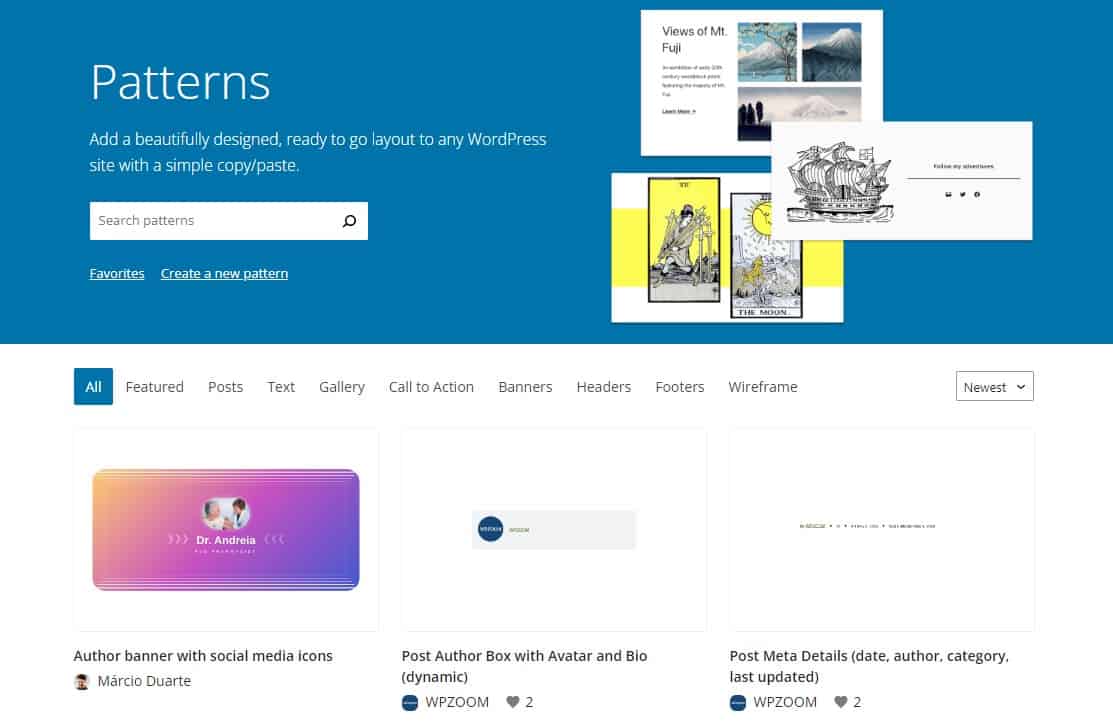
WordPress.org already has a templates library called patterns (see above 👆) and Elementor is cornering a segment of the market with its templates and template kits.
These developments are sure to bring our ecosystem more talent.
Sure, the market will be flooded as more web creators are drawn to WP. And yes, an influx of non-tech creators will bring other challenges to the ecosystem, but isn’t the point of WordPress inclusion and community and support?
When you empower people with tools, it teaches them something, and it nurtures passion and drive. Every day you’re getting better. You’re learning, progressing, and moving towards creating something awesome and valuable to consumers. Historically, one only needs to look at plugin developers as a use case for proof. Many are self-taught and their plugins probably had sub-par code or security vulnerabilities at the beginning of their careers.
But you know what? The journey of creating that initial plugin is what got them excited about development and WordPress. Over time, that excitement turned into skill — they got better at working with the code — and would go on to become excellent developers who contribute meaningful work to the WP Project.
There are always downsides, especially when entering uncharted territory. But page builders, block editors, full site editing, and templates will create financial opportunities for many people. People who might not otherwise have been drawn to development, or even WordPress for that matter.
The WYSIWYG and templates evolution will be good for users too. Consumers will have more options to choose from. This choice will drive competition and innovation, ensuring that WordPress can keep up with and surpass competitors that are gradually encroaching on the ecosystem’s market share.
We are not witnessing the death of all WordPress themes. What we are witnessing, however, is the rise of new solutions to fit user needs; new solutions that will create opportunities for creators. It’s an exciting time for WordPress, the community, and web creation in general, so let’s embrace the change, roll with the punches, and do what we do best: build awesome things that add real value to the world around us.







